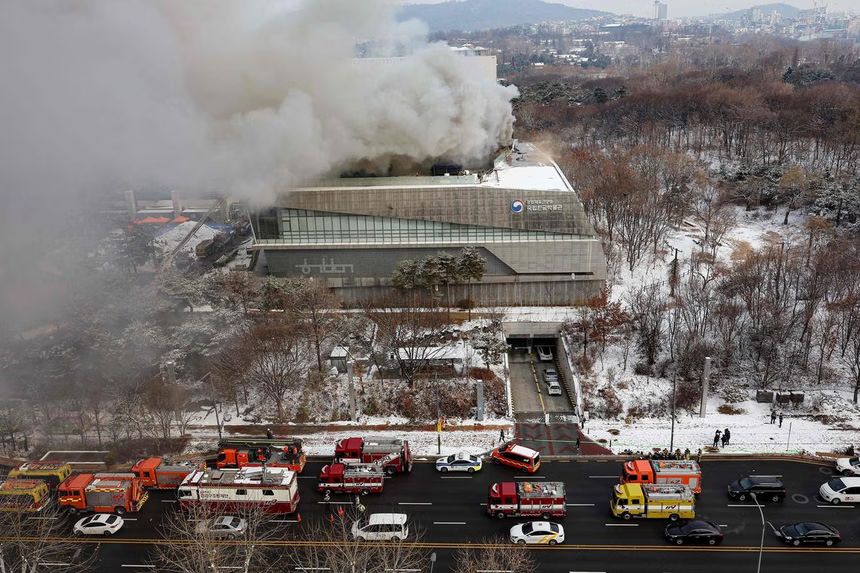Zelenskyy’s ‘Plan’ Against Russia: A Closer Look

Department of Research, Studies and International News 27-09-2024
Ukrainian President Volodymyr Zelenskyy is actively working to secure international support for Ukraine as part of his strategic “Plan” against Russia. During his recent visit to the United States, he met with President Joe Biden and Democratic presidential candidate Kamala Harris to promote this plan.
Although the full details of this plan have not been officially released, Zelenskyy and his close advisers have gradually unveiled some of its key components. Here’s an overview of the plan’s elements and whether Ukraine’s allies are aligned with it.
The Core Elements of the Plan
Zelenskyy’s blueprint is thought to be a five-point strategy. In an interview with ABC News, the Ukrainian leader explained that the plan is meant to strengthen Ukraine’s position in future negotiations, with the ultimate goal of ending the conflict on terms favorable to Kyiv. Central to the plan is Ukraine’s peace proposal, which sets clear conditions for any discussions with Russia. These demands include the complete withdrawal of Russian forces from all occupied Ukrainian territories, including Crimea and regions in Kherson, Zaporizhzhia, Donetsk, and Luhansk.
Unsurprisingly, Russia has rejected these terms, but Zelenskyy believes that strong international support for Ukraine’s victory plan could pressure Moscow into considering a peace summit based on Kyiv’s conditions. The plan comprises security, political, and economic components, with Zelenskyy emphasizing that swift action from the West; within the next three months; is essential for its success.
1.Key Components of the Plan
NATO Membership for Ukraine
One of the most significant aspects of the plan is Ukraine’s formal invitation to join NATO. Andriy Yermak, Zelenskyy’s chief of staff, highlighted this priority in a recent address at the Council on Foreign Relations. Although Ukraine is currently a NATO partner rather than a member, the alliance has hinted that Ukraine is on an “irreversible” path to full membership. However, granting membership while the war with Russia is ongoing remains controversial, as it would likely lead to NATO’s direct involvement in the conflict. NATO’s stance, outlined during the Washington summit in July, is that membership will be considered when conditions are favorable. For now, NATO is not fully aligned with this part of Zelenskyy’s plan.
2 Long-Range Missiles
Another key element of the victory plan is Ukraine’s request for long-range missiles capable of striking deep within Russian territory. Ukraine intensified these demands following a military operation in Russia’s Kursk region in August. While some NATO allies support this request, others, particularly the US and UK, remain cautious due to fears of escalating the conflict. Russian President Vladimir Putin has warned that using these weapons against Russian targets would effectively mean NATO is at war with Russia. Currently, Ukraine is utilizing long-range missiles to target locations in Crimea and other occupied areas within its borders.
3 Sustained Supply of Advanced Weaponry
Since Russia’s invasion in 2022, Ukraine has relied heavily on weapons supplied by NATO allies. However, Zelenskyy has pointed out that the process of securing specific weapons has often been slow, resulting in delayed responses and unnecessary losses. The plan includes a request for a more consistent and reliable flow of advanced weapons. Although NATO members have worked to accelerate supplies, they remain hesitant to commit to an open-ended supply chain.
4 European Union (EU) Membership
Another critical component of Zelenskyy’s plan is securing Ukraine’s path to EU membership. Ukraine has been a candidate for membership since June 2022, but it must still fulfill certain requirements, including aligning its laws with EU standards. The EU has already provided financial support to Ukraine, and membership negotiations are expected to begin by June 2024.
5 Additional Economic Aid
Zelenskyy’s victory plan also calls for significant economic assistance. According to the World Bank, Ukraine will need approximately $480 billion for post-war reconstruction. The US has recently committed an additional $8 billion in aid, while European countries and the US have collectively provided over $200 billion in financial support since the war began. However, this is only a fraction of the total economic aid that Ukraine will need in the long term.
Conclusion
Zelenskyy’s plan is a comprehensive strategy aimed at securing Ukraine’s future through military, political, and economic support from its allies. While NATO and the EU have shown solidarity with Ukraine, some key elements of the plan, such as NATO membership and the use of long-range missiles, remain points of contention.





